Back in the hot days of 2016, Washington, DC was the scene of a coffee event that stood apart from the typical coffee crawls and throwdowns: La Colombe played host to Winrock International, the US Agency for International Development (USAID), Atlas Coffee Importers, and the Coffee Quality Institute (CQI), who invited guests to celebrate and taste the first commercially available specialty coffee from Myanmar.
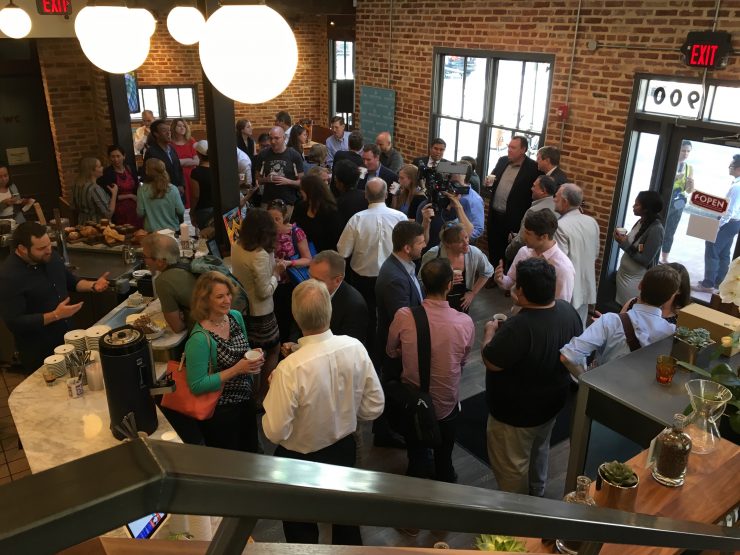
Guests at the Aug. 23 Myanmar coffee tasting at La Colombe Chinatown in Washington, DC.
As toasts and remarks began, local coffee roasters and retailers stood shoulder to shoulder with guests from the State Department and the Embassy of Myanmar, as well as a fair share of reporters from diverse news outlets. Key people in the project came forward to address and share with the crowd how this coffee came to be, and baristas served espresso and brewed coffee using La Colombe Workshop’s Myanmar Min Paung.
In 2014, Winrock, an international development nonprofit, began a five-year, $27 million project (funded by a grant from USAID) in Myanmar to develop better agricultural practices, helping farmers produce more quality cherries and better connect with markets; USAID calls this work “upgrading value chains.” Coffee is just one of the crops in Myanmar undergoing value-chain development. Sprudge talked with Andrew Hetzel, a consultant for CQI on the Myanmar project, to get more information about this process.
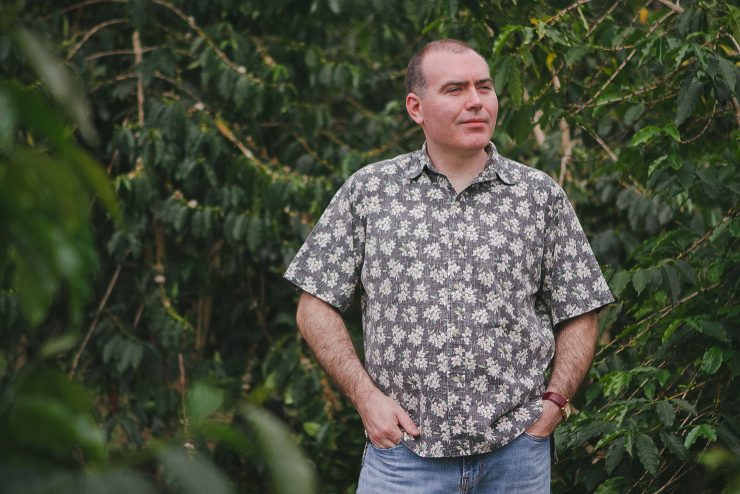
Andrew Hetzel
For a lot of readers working on the retail level of coffee, CQI is synonymous with Q grading. Can you describe the CQI and your role within it?
CQI was originally founded as a charitable trust by the SCAA, but it’s an independent company with a board of trustees and its own staff. On a global level, it offers technical services and support for every part of the coffee supply chain, the Q Coffee System being one example. The Q is popular and important because it’s a common language, one tool for all coffee evaluators to use. But CQI does much of its work in international research, agricultural science, and business development on the production side of the chain.
I’m a project consultant contracted with CQI. For the Myanmar specialty coffee project, I was brought in about six months after the project started to help with the go-to-market portion, which is strategizing how this coffee is going to reach coffee consumers in the best possible way.
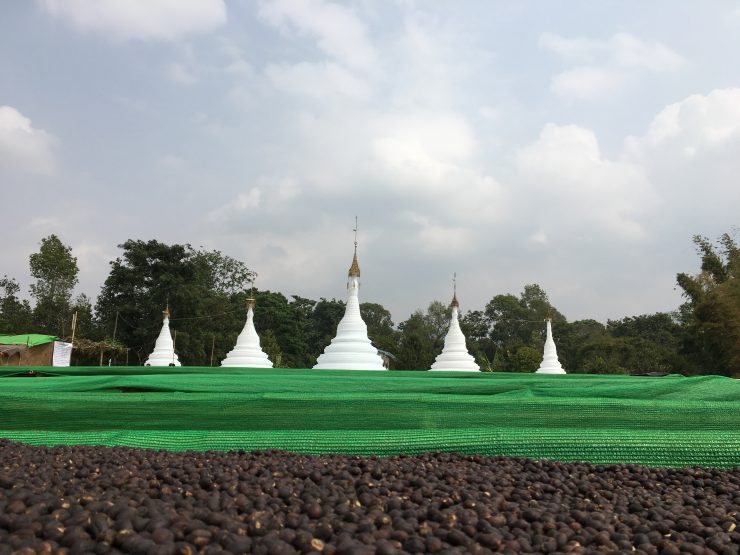
Coffee cherries drying outside in Shan State, Myanmar.
When coffee retailers want to tell a story of origin to their customers, how would you want them to describe Myanmar?
For a lot of Western coffee drinkers, not much comes to mind when you mention Myanmar. So, a bit of history first: Myanmar was formerly known as Burma and was a British colony until 1948. It was an independent state until 1962, when the military took over with a coup d’etat. In 2011, however, political reform began, and agricultural growth was incentivized by the government.
As a side note, Myanmar self-identifies as Myanmar, but the US government still refers to it as Burma, because the US never formally recognized the junta that was responsible for renaming [it] Myanmar. Happily, calling the country Burma doesn’t offend most citizens.
It’s such a fascinating country, with an ancient culture. Back in the 1700s, it was the richest country in Asia. The culture is diverse, steeped in religion and mysticism, in a really beautiful area of the world.
The weather in Shan State, where much of our work was focused, is notably cooler than humid, sea-level Yangon (Rangoon) or Thailand’s Bangkok. It has elevations of 1,100–1,200 meters above sea level, ideal for Arabica varieties.

Buddhist pagodas behind sun-dried coffee cherries in Shan State.
A really interesting aspect of the Myanmar landscape in Shan State is the sheer number of pagodas. They’re everywhere, dotting the landscape all over the region.
The producers we got to work with on this project were extraordinarily friendly and singularly motivated; it seems now that they have this chance to excel, they can’t wait to show us what they’re capable of. I remember walking around a village in Shan State with no electricity, limited running water, and these small homes, watching residents bustling around, sweeping their front steps. It was this tiny moment that clued me into a sense of pride of country, which I think is echoed in the quality of this coffee.
What varieties grow in Shan State?
There’s definitely a mix—S795, Catuai, Caturra, Catimor, SL34, Bourbon, and Typica all grow here, though the yields of these varieties may be lower because of coffee leaf rust. Even Blue Mountain can be found, probably brought directly from Jamaica at some point.
Certain Arabica varieties have grown in Myanmar long before this project started, for some 170 years, but the cherries weren’t tended to in a way that encouraged high cup scores. A lot of the coffee had been making its way over the border into China or Thailand via undocumented trade, and many of the producers had not been processing the coffee and selling it as whole cherries! It was being sold far below commodity exchange rates by generic traders buying things like rubber and soybeans. Now we’re facilitating a Free on Board (FOB) model of selling green coffee, which is putting these rural farmers in contact with an international market for high-value trade.
What does processing look like?
Shan State primarily is smallholder farmers without processing stations; the cherries are sun-dried on raised drying beds. What’s great is the harvest season coincides with the dry season here, in December/January, so there’s not rain dropping on the cherries as they’re drying. Processing of coffee is, like the production of all crops, done cooperatively.
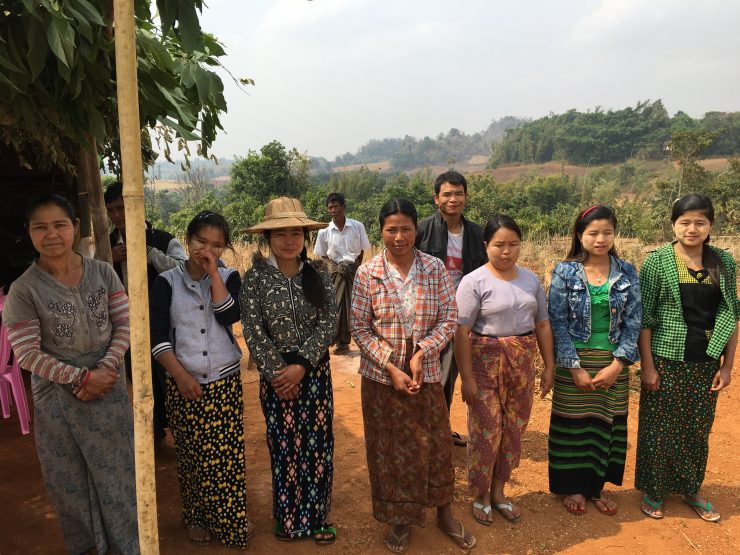
Shan State coffee producers.
About four hours away, in the wealthier city of Mandalay, we helped establish the Myanmar Coffee Association, which represents the interests of coffee growers nationally, and from that association the Mandalay Coffee Group collaboratively purchased processing equipment with the help of the USAID grant. That group has been buying cherries from Shan State to process on their equipment, and acting as an exporter for that coffee.
How do you think specialty coffee consumers will react to a new coffee origin, especially one as relatively unknown as Myanmar?
I think as more people make specialty coffee part of their ritual, their collective set of drivers and considerations for coffee will become more and more diverse. For some, I wonder if the novel origin will be an incentive. With others, used to drinking perhaps mostly Central and South American origins, the good news is the profile of this coffee coming out of Myanmar is incredibly approachable, and similar to a Central or even Mexican in taste. Washed coffees from this region can have orange or fruity notes and still remain incredibly mild. The naturals can have some intensity, with notes of cranberry and rhubarb pie. But when we cup this coffee, it’s never a table-splitter. Because it has flavors specialty consumers have already encountered, there’s a ton to appreciate. And with globalization and the very real challenge of climate change, I think consumers will get introduced to more and more diversity in the coffee origins lineup.
On that note, this project is reminiscent of Catholic Relief Services’ Borderlands Project, which also connects growers with specialty coffee markets. Are the two similar? Is this part of a trend that may continue?
Will we see more of this type of development? Without question, because coffee consumption is rising faster than coffee production. International development projects with the goal of creating industry that’s peaceful and profitable and produces a product everyone wants is a win-win scenario. In some of my upcoming projects in Angola and Timor-Leste, a lot of their GDP is from oil production, a nonrenewable resource, and when prices are low, the whole country suffers. Coffee is a very achievable industry that can be safe and sustainable.
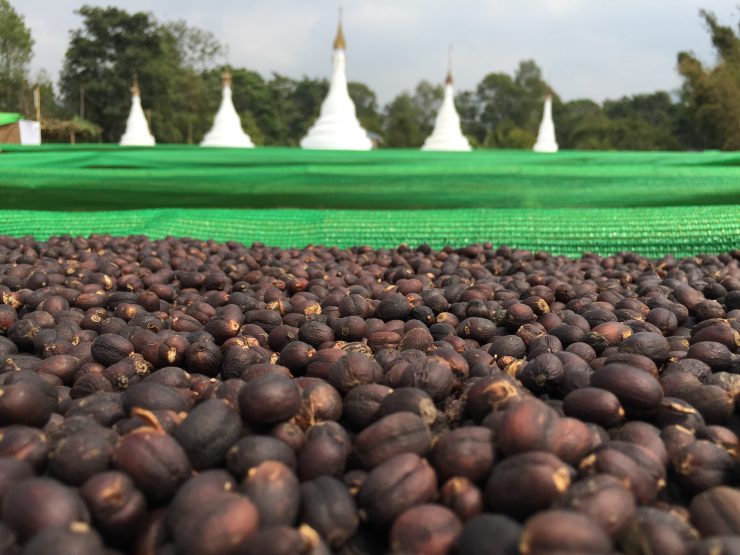
Raised drying beds built by Shan State producers were produced in collaboration with CQI and Winrock.
Myanmar is different from the Borderlands projects in Ecuador and Colombia in that because of the political climate, it’s like this glass bubble [has been] lifted off of it and now it’s suddenly open for business. But the goals are indeed similar. Both projects are there to connect poor farmers with a high-value market. Our project in Myanmar also has an included focus of supporting women and ethnic minorities to compete internationally.
It will be interesting to watch Myanmar as it continues to develop. It’s happening so quickly. As recently as two years ago, I had to pay for everything with cash; I picked up a little suitcase of cash at the airport so I could pay for things. My phone didn’t work, and there wasn’t really internet access. On my last visit six months ago, there was a new airport, new highways, hotels are taking credit cards and have Internet. It’s tremendous and exciting, but our goal is to implement slow and steady growth that can be sustainable.
Dawn Shanks (@DawnShanks) is an American coffee professional based in Washington, DC. Read more Dawn Shanks on Sprudge.
Photos courtesy of Andrew Hetzel.
The post Myanmar Coffee Is Having A Moment appeared first on Sprudge.
seen 1st on http://sprudge.com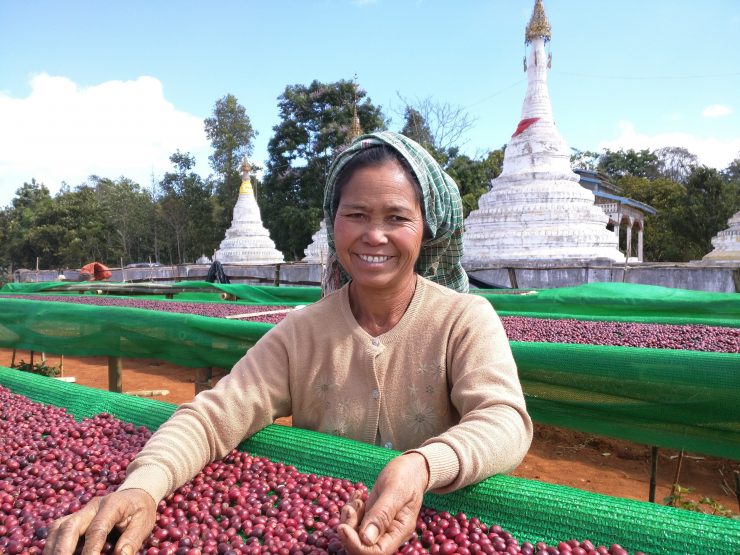
No comments:
Post a Comment